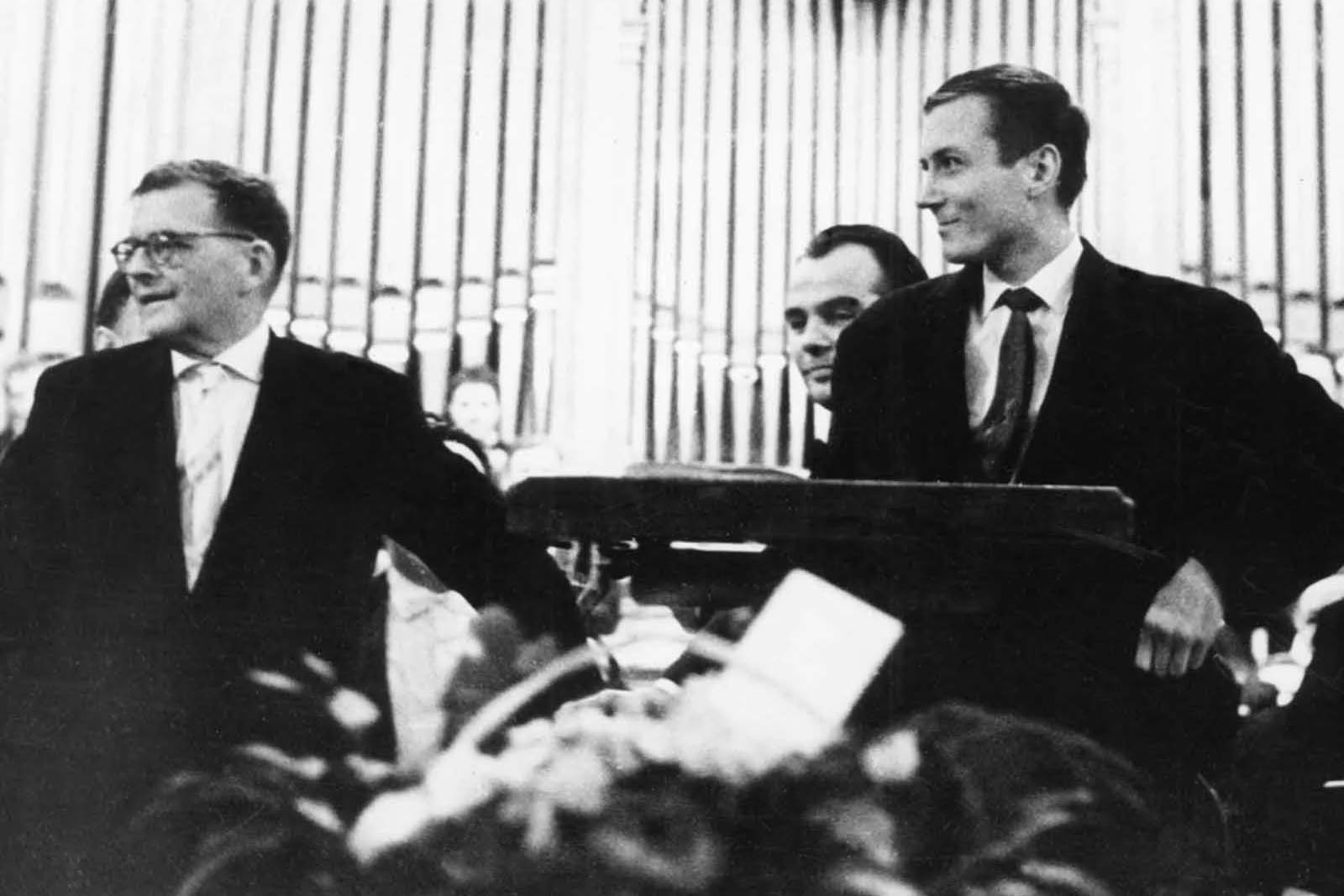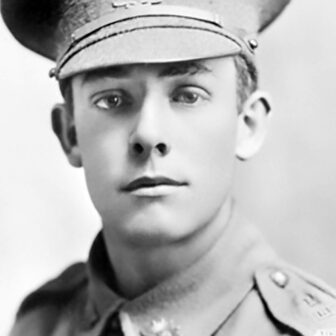Jeremy Eichler’s Time’s Echo examines four works of postwar musical commemoration created respectively by a German, an Austrian Jew in exile, an Englishman and a Russian: Richard Strauss’s Metamorphosen (1945), Arnold Schoenberg’s A Survivor from Warsaw (1947), Benjamin Britten’s War Requiem (1962) and Dmitri Shostakovich’s Symphony No 13 (1962). Although the book is subtitled “The Second World War, the Holocaust and the Music of Remembrance,” only two of these works deal explicitly with the Holocaust and only one explicitly with the war. The third deals with neither. And the fourth? Well, it’s hard to say exactly what is being commemorated. In a way, it is such ambiguity that is the book’s real subject.
Perhaps the least ambiguous of the works discussed is A Survivor from Warsaw; it is also the least like a memorial, being powerfully dramatic and barely eight minutes long. The Austrian-born Schoenberg had seen Hitler for what he was as early as 1924, and left Europe for the United States in the year Hitler came to power. By 1947 he was a long-time resident of Los Angeles, and his terse, twelve-tone cantata is a vivid retelling of an incident remembered from a concentration camp by a survivor of the Warsaw ghetto. The text (by the composer himself) is spoken in English and in the first person, except for the commands of a sergeant, which are shouted in German. At the work’s climax, a men’s chorus defiantly sings a unison setting of the “Shema Yisrael.” (Hear, O Israel! The Lord is our God! The Lord is One!)
From the beginning, the work was controversial. The dramatic immediacy of Schoenberg’s music and text was so confronting that some early performances were cancelled and the work bowdlerised. In the first German performance, for instance, mention of a “gas chamber” was deleted.
Shostakovich’s symphony, the first movement of which sets to music Yevgeny Yevtushenko’s poem “Babi Yar,” ran into similar difficulties with Soviet authorities. The ravine at Babyn Yar — to give it its Ukrainian name — was the scene of the massacre of more than 33,000 of Kyiv’s Jews in just two days in September 1941. Later massacres there included not only Jews but also Romani, Soviet prisoners of war and communists. Efforts to conceal the atrocities began before the war ended, as the ravine was gradually filled in and levelled. Now it has gone. After the war, the Soviet authorities were keen that the site be remembered for Nazi atrocities but discouraged specific mention of Jews, so Yevtushenko’s poem, which began “Over Babi Yar there are no memorials,” proved contentious.
The poet was not himself Jewish, but in his poem he identified with the victims of anti-Semitism and anti-Semitic genocide, naming Alfred Dreyfus and Anne Frank and stating, “Today I am as old as the Jewish race.” Most radical, as Eichler points out, was the poem’s criticism of Soviet anti-Semitism. Even during the Khrushchev thaw, this was brave of Yevtushenko, and it was braver still of Shostakovich to put it to music. Conductors found they were too busy to take on the premiere and the bass soloist was suddenly indisposed on the day (something that had been foreseen, so a substitute was standing by). It wasn’t long before Yevtushenko was prevailed upon to water down his poem, but when Shostakovich refused to change the words in his symphony the piece was banned.
Eichler quotes the critic Lionel Trilling, who remarked that “if we ever want to remind ourselves of the nature and power of art, we have only to think of how accurate reactionary governments are in their awareness of that nature and that power.”
The most famous musical war memorial is probably Britten’s War Requiem, commissioned for the inauguration in 1962 of new Coventry Cathedral, its medieval predecessor having been destroyed in the bombing raid on that city in November 1940. And yet Britten’s piece makes no mention of the Holocaust, and neither does it refer, directly, to the second world war. The poems Britten put to music, alongside the Latin words of the Requiem Mass, were by first world war poet Wilfred Owen. Perhaps it was this distancing from his subject — the universalising of his theme to be “war and the pity of war,” as Owen put it — that allowed Britten’s piece to gain immediate international acceptance.
Of the four works discussed by Eichler, only Strauss’s Metamorphosen for twenty-three solo strings has no words. The piece began to germinate before the war ended, when the elderly Strauss learnt of the razing in bombing raids of the opera houses in Munich, Berlin, Dresden and Vienna. He had conducted in these houses, some of which had staged premieres of his operas, and felt their destruction keenly. But Strauss was not only in mourning for his own past; the opera houses were emblematic of German culture, and that had been endangered by more than Allied bombing.
Strauss had been nearly seventy when Hitler came to power. His librettist, Stefan Zweig, was a Jew and so was Strauss’s daughter-in-law, and therefore his grandchildren. But Strauss himself was Germany’s most famous living composer, so his instinct was to keep his head down, accept honours that came his way and ingratiate himself with the Third Reich. It couldn’t last. When his opera with Zweig, Die schweigsame Frau, was premiered in 1935 and Strauss saw that the Jewish librettist’s name was left off the poster, he objected. Performances were cancelled and Strauss, now persona non grata, took himself off to Garmisch in the Alps.
Strauss’s Metamorphosen is evidently music of deep regret, but what was the composer regretting? His own behaviour? His naivety? At the end of the score, Strauss wrote, “IN MEMORIAM.” But to whose memory is the music dedicated? To that of his Jewish neighbours in Garmisch who disappeared and never returned? To German culture? If it’s the latter, then there is a semblance of hope in the form of a quotation, just before the end of the piece, from the funeral march of Beethoven’s Eroica symphony. It’s as though Strauss is saying: at least Beethoven survived.
I wrote above that, unlike the other composers, Strauss set no words in his Metamorphosen but, as Eichler reminds us, to begin with there were words. The piece for twenty-three solo strings grew out of the composer’s attempt to put to music a short poem by Goethe, “Niemand wird sich selber kennen” (No One Will Ever Know Himself). This is the complete text:
No one will ever know himself,
Separate himself from his inner being.
But still he senses every day
What at last becomes outwardly clear:
What he is and what he was,
What he can do and what he may.
So, a poem about the struggle for self-knowledge. Is that what memorials are for?
In the prelude to Time’s Echo, Eichler writes of two non-musical memorials. One is a small sculpture made from “Goethe’s oak,” a tree in the forest of the Ettersberg that became associated with the great German poet in the nineteenth century. A little over a hundred years after his death, the forest was cleared by prisoners to make way for their own concentration camp: Buchenwald. The oak was preserved, but during the war it died and, when the camp was bombed, the trunk was charred. The camp guards had it chopped down, though the stump still survives. In an act of bravery, a lump of the wood was saved by a prisoner, Bruno Apitz, and turned into a bas-relief death mask, which he called “The Last Face.”
The other memorial, which is nowhere to be seen, is to the Jews of Saarbrücken. In front of the municipal building that once housed the Gestapo headquarters is a cobblestoned square. One night in 1991 the artist Jochen Gerz led a group of students into the square to dig up some of the cobblestones and replace them with temporary stones. The originals were then inscribed with the names of more than two thousand Jewish cemeteries destroyed by the Reich. Again under cover of darkness, the stones were replaced, but with the names face down.
Word spread in Saarbrücken about the removal and replacement of the cobblestones. But when the locals arrived to see what had happened, they saw nothing. Only each other.
Jeremy Eichler’s Time’s Echo is a towering achievement. Do read it. And listen to the music. •
Andrew Ford talks to Jeremy Eichler about Time’s Echo on The Music Show.




